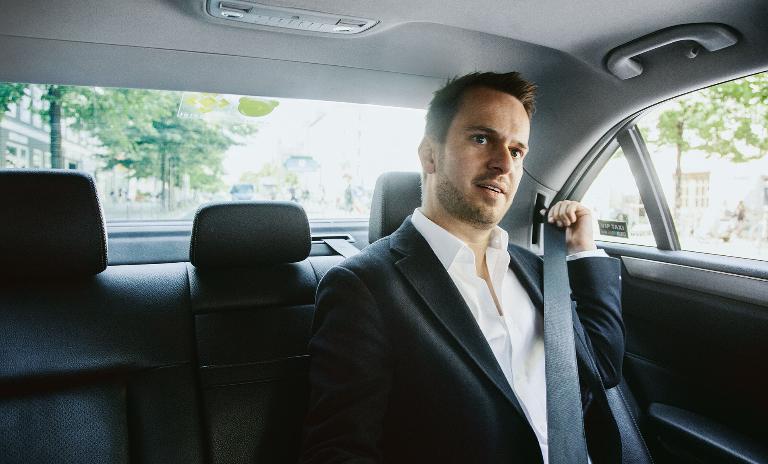" Mobility on demand will cover 30 % or more of traffic in conurbations. "


“Ad hoc availability is the key”
- Interview with Christian Freese, head of Uber Germany. This text is only an excerpt. Find the complete version in the latest issue of our magazine “Automotive Insights” (free download below).
Mr. Freese, automated driving, e-mobility, carsharing – the automotive sector is changing at a phenomenal pace. It is reasonable to talk about a revolution?
CHRISTIAN FREESE: It certainly is! We are currently witnessing a radical change in the way people behave in conurbations. Trips are no longer planned and pre-ordered hours in advance: They are now ordered directly and begun immediately. Ad hoc availability is the key. Mobility on demand is set to flourish, although I personally feel that the term “mobility on the spot” more accurately describes the phenomenon.
And then there is the fact that people want to travel safely and at low cost. We as a company come face to face with all three demands in every region of the world. The regional differences in customers’ behavior are much less pronounced than many people think.

What business opportunities will the mobility market open up in the future?
Customers will want more options to choose from. They want to be able to decide at a moment’s notice what is the best, fastest and lowest-cost alternative for them. We are responding to that as a company. We see Uber as a network of cars that are out on the road and whose capacity needs to be utilized.
"We are a technology company, so we have a keen interest in advancing technologies such as electromobility and automated driving."
And we are in the process of organizing additional services for this network. For example, we are setting up UberEATS, which will let people have lunch and dinner delivered to them from their favorite restaurants. We also see huge potential for new services in logistics, e.g. the rapid delivery of letters and parcels.
That will generate new traffic. Doesn’t car and ride sharing promise exactly the opposite: better utilization of cars as a resource?
Both aspects are true: More people will be moving around and car capacity utilization will improve. That is because the way we use cars is changing so rapidly. Take our UberPOOL service in San Francisco, for example. The passenger gets in at point A and wants to go to point B. Once the car sets off, an algorithm kicks in that identifies a second passenger who wants to go in exactly the same direction, but who doesn’t want to get out until point C. When the first passenger gets out, our software pools the data again – and so on and so forth. We have reached the stage where we have drivers who go for hours with at least one passenger in their car.
Do tomorrow’s customers really no longer want to own a car?
They don’t. Among city dwellers, we see a tendency at least to do without a second car, and in some cases even the first car. We figure that in a couple of years, mobility on demand will cover 20 to 30 percent or more of traffic in conurbations.
That doesn’t mean the end of the privately owned car, and certainly not in rural areas. Many people in these regions will scarcely be able to get by without their own car. In sprawling urban areas too, our new mobility offerings will reach the limits of their effectiveness, because we won’t be able to achieve attractive vehicle density everywhere.
"We want to encourage OEMs to come up with product innovations."
How will the constantly growing share of mobility-on-demand offers in cities affect the sales market for automobiles?
Automotive OEMs will not see their sales collapse because of mobility on demand, as the mileage clocked up by cars will remain roughly the same. In the medium term, though, there will be significantly fewer cars on the roads, because they will be used more efficiently than they are today.
If car capacity utilization increases by a factor of seven, which is what we as a company expect to happen, seven times more wear and tear will mean that new vehicles have to be bought much more quickly. That could lead to changes in OEMs’ aftersales business.

Mobility companies with a global reach are establishing powerful new players on the market. What consequences could that have for the automaker?
There may be new players, but there won’t be a really new situation for the automotive companies. You’ve already got global car rental firms in operation today.
Unlike the latter, Uber doesn’t even plan to become a direct customer for cars. At the very most, we will negotiate master purchasing agreements for our partner drivers. But we are a technology company, so we definitely have a keen interest in advancing technologies such as electromobility and automated driving. We also want to encourage OEMs to come up with product innovations – to create vehicles that are even better suited to our mobility services, for example.
Does that mean you would like to work together with OEMs to develop new vehicles?
We are an excellent point of contact when it comes to finding out what the ideal vehicle for this or that new mobility segment might look like. For our part, we have no concerns about getting involved. Especially when you look below the premium class, there is still a lack of vehicle types that convincingly meet the demands of customers for taxi, rental and car-sharing services.
This text is only an excerpt of a longer interview with Christian Freese in the latest issue of the Roland Berger customer magazine “Automotive Insights”. Download it for free below. And read more about new mobility in our dossier “Digital Drive“.

Automotive Insights 2015: The future of automotive
![{[downloads[language].preview]}](https://www.rolandberger.com/publications/publication_image/cover_accinsights2015_download_preview.png)
A transition phase, a sea change, a revolution – the recent developments in the automotive industry have been called many things.


